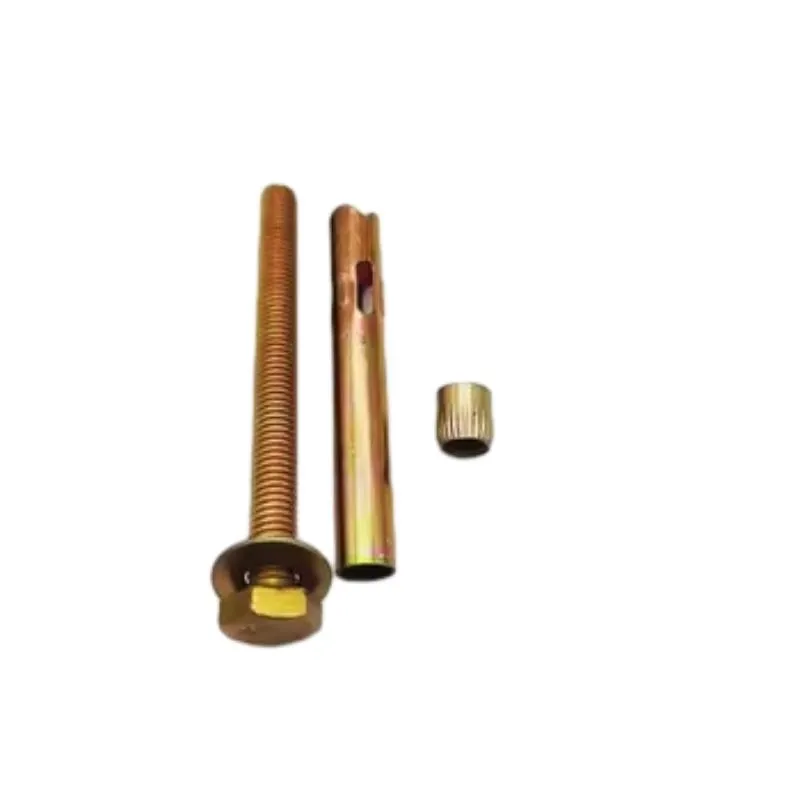Dic . 05, 2024 14:56 Back to list
3d printed threaded rod
The Future of Manufacturing 3D Printed Threaded Rods
In recent years, the convergence of manufacturing technology and innovative materials has led to an exciting revolution in various industries. One such advancement is the use of 3D printed components, particularly threaded rods. These components, integral to numerous applications, have been greatly influenced by the capabilities offered by 3D printing technology. This article explores what 3D printed threaded rods are, their applications, and the benefits they present.
Understanding 3D Printed Threaded Rods
Threaded rods are cylindrical rods with helical grooves that allow them to be used with nuts and other fasteners to provide structural support or facilitate movement. Traditionally manufactured from materials such as steel, these rods are essential in construction, automotive, machinery, and many other fields. However, the process of producing them can be time-consuming and costly, often involving substantial material waste.
The advent of 3D printing has changed this paradigm. By using additive manufacturing techniques, threaded rods can be produced layer by layer, allowing for intricate designs that may not be feasible with conventional machining methods. This process not only reduces waste but also enables rapid prototyping, leading to a significant reduction in production time.
Applications
The versatility of 3D printed threaded rods finds application across diverse industries.
1. Construction and Civil Engineering Threaded rods are often used in structural applications, such as anchoring elements in buildings and bridges. Their customizable lengths and specifications allow engineers to tailor components to their specific needs, ensuring safety and durability.
2. Automotive Parts In the automotive sector, threaded rods play a vital role in assembly and fastening. With the rapid development of electric and autonomous vehicles, the demand for lightweight and strong components has surged. 3D printed rods made from advanced materials, such as composite plastics or metal alloys, can contribute to weight reduction without sacrificing strength.
3. Robotics and Automation The robotics industry utilizes threaded rods for linear movements and linking mechanical structures. 3D printing enables engineers to create complex assemblies that optimize space and function, thereby enhancing the overall performance of robotic systems.
3d printed threaded rod

4. Prototyping and R&D 3D printed threaded rods allow researchers and developers to quickly iterate designs, facilitating faster innovation. This is particularly useful in the field of product design, where testing different configurations can lead to better-performing products.
Benefits of 3D Printing Threaded Rods
Adopting 3D printing for manufacturing threaded rods offers multiple advantages
1. Customization Designers can easily modify specifications such as dimensions, thread pitch, and material, tailoring designs for specific applications. This flexibility is a significant advantage over traditional manufacturing methods.
2. Material Efficiency The additive nature of 3D printing minimizes waste, as materials are only used where needed. This not only cuts costs but also makes the manufacturing process more environmentally friendly.
3. Rapid Production The ability to quickly produce prototypes or final products accelerates the design cycle, enabling businesses to bring products to market faster than ever before.
4. Reduction in Inventory Costs With on-demand production capabilities, companies can reduce the need for maintaining large inventories of threaded rods, which can tie up capital and increase storage costs.
5. Complex Geometries 3D printing allows for the creation of complex forms that can enhance performance. For example, incorporating features such as anti-loosening threads or integrated functions can lead to better overall efficiency.
Conclusion
The integration of 3D printing technology into the production of threaded rods represents a significant step forward in manufacturing efficiency and innovation. As industries continue to seek more sustainable and cost-effective solutions, the role of 3D printed components is set to grow. With their versatility and adaptability, 3D printed threaded rods not only revolutionize traditional practices but also pave the way for future advancements in engineering and design. As technology evolves, the potential for these applications is limited only by our imagination.


